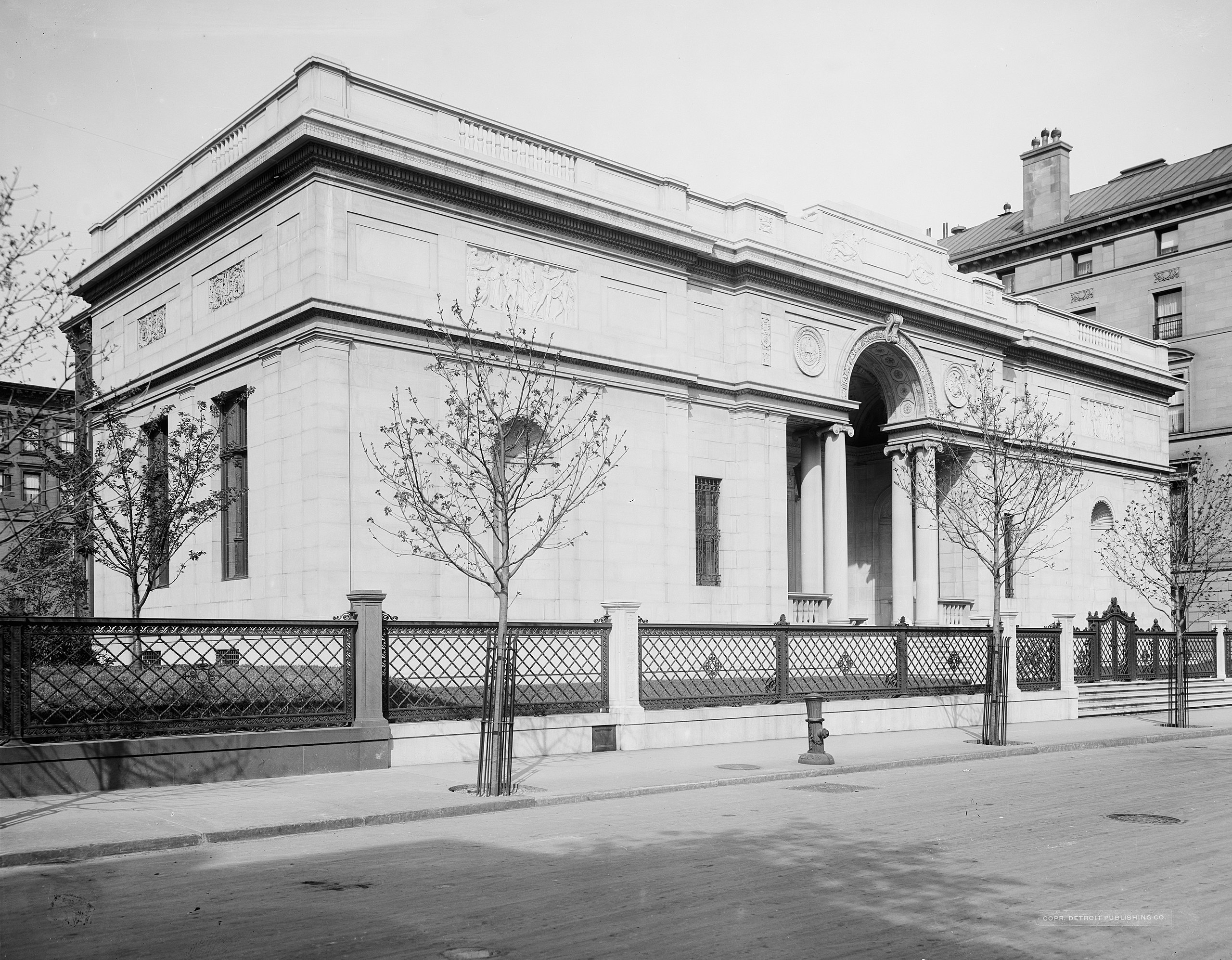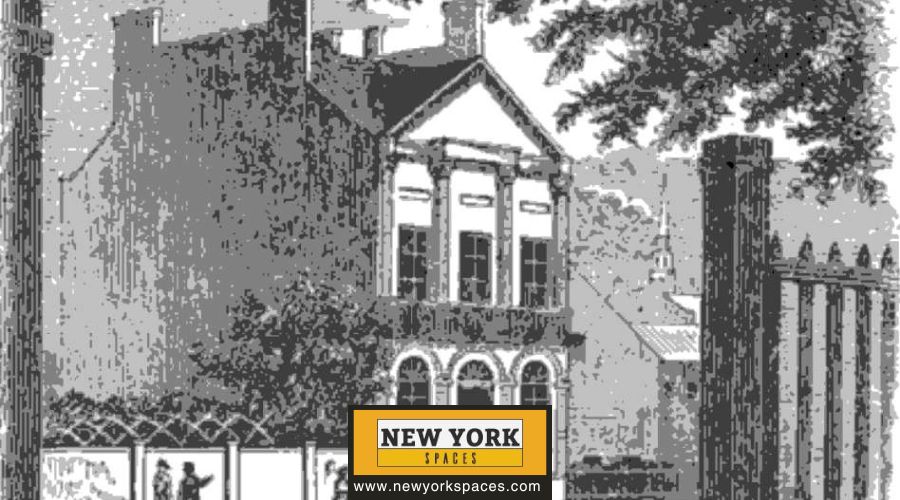New York City is a big, busy place famous for its landmarks. But it also has some hidden treasures that not many people know about. One of these treasures is its secret libraries. Each of these libraries is special and has a lot of history. In this blog post, we will look at these hidden libraries, learn their stories, and see why people who love books and those who love to explore new things should visit them.
1. The Grolier Club Library
Located in the heart of the Upper East Side, The Grolier Club Library, established in 1884, is a venerable institution dedicated to celebrating book arts and the community of bibliophiles. Its prime location in one of New York City’s most distinguished neighborhoods underscores its status as a central hub for literary enthusiasts and scholars.
An Expansive Repository of Book Arts:
The library’s impressive collection, which exceeds 100,000 volumes, encompasses many subjects related to the book arts. This extensive assortment includes everything from typography and bookbinding to paper making and illustration, offering an exhaustive resource for those passionate about the history and craft of bookmaking.
A Kaleidoscope of Exhibitions:
The Grolier Club Library is renowned for its dynamic exhibition program, which showcases a broad spectrum of themes related to the book arts. These exhibitions range from historical retrospectives of early printing techniques to explorations of contemporary design and bookmaking innovations. By regularly refreshing its display, the library ensures that each visit offers a new and enlightening experience, drawing visitors into the evolving story of the book.
Architectural Elegance and Historical Significance:
Beyond its literary treasures, The Grolier Club Library’s architecture is a marvel. Designed with a deep appreciation for the aesthetics and history of bookmaking, the building’s architecture reflects the institution’s dedication to the literary arts. The library’s interiors’ thoughtful design and ornate details create an inspiring environment that celebrates books’ enduring beauty and significance in our culture.
View this post on Instagram
2. The Morgan Library & Museum

The Morgan Library & Museum embodies a remarkable transformation, evolving from the personal collection of financier Pierpont Morgan into an esteemed public museum and research library. This transition marks a significant shift, opening up a once-private trove of cultural and historical wealth to the broader public, thereby enriching the cultural fabric of society.
Treasures of Manuscripts and Books:
The rare manuscripts and books are at the heart of The Morgan Library & Museum’s collections, including seminal works by classical composers like Mozart and Beethoven. These collections are not just limited to musical scores but extend to literary manuscripts, historical documents, and early printed books, offering a window into the creative genius of some of history’s most influential figures.
A Spectrum of Exhibitions:
What sets The Morgan apart is its vibrant roster of exhibitions, which are as dynamic as diverse. Spanning a wide range of themes, from ancient manuscripts’ intricacies to modern art’s avant-garde movements, these exhibitions are thoughtfully curated to engage and educate visitors. Through its rotating exhibits, The Morgan ensures that each visit remains a unique exploration into the various facets of human creativity and intellect.
Reflecting on the Transformation:
The evolution of The Morgan Library & Museum from the private collection of a single individual to a public institution of cultural significance is a testament to the enduring value of art and knowledge. By opening its doors to the public, The Morgan has not only preserved the legacy of Pierpont Morgan but has also established itself as a pivotal cultural landmark, offering access to rare and exquisite works that span the spectrum of human achievement.
View this post on Instagram
3. The New York Society Library
The New York Society Library stands as a bridge between the historical and the contemporary, rooted deeply in New York City’s cultural and intellectual life since its establishment in 1754. This institution is a testament to the city’s rich literary past and is pivotal in its vibrant cultural present.
With its unique position as a circulating library in the heart of New York and a dynamic center for community engagement, The New York Society Library maintains the tradition of reading and learning alive. Its diverse collection spans centuries, alongside a rich program of events and workshops, making it a vital cultural hub for New Yorkers and a beacon for literary and historical enthusiasts.
Library Highlights:
- Circulating Collection: Unique among the city’s more secluded libraries, it offers a lending service to its members, keeping the age-old tradition of reading vibrant and accessible.
- Community Events: With a bustling schedule of events and workshops, the library serves as a cultural hub, fostering community among its members and visitors.
4. The General Society Library
Situated in the heart of New York City, The General Society Library emerges as a focal point for exploring labor, craftsmanship, and industrial history. Initiated by The General Society of Mechanics and Tradesmen, this library is a tribute to the city’s dynamic industrial journey, reflecting the societal contributions of skilled workers throughout the ages.
Fostering Educational Growth:
True to its founding ethos, the library champions educational endeavors, offering an array of lectures and courses. These programs are meticulously designed to shed light on various trades, marrying the rich history of craftsmanship with the needs of contemporary skill development. This educational thrust not only honors the legacy of past artisans but also equips today’s workforce with valuable knowledge and skills.
A Treasure Trove of Industrial History:
For enthusiasts of history and industry, the library’s archives are nothing short of a gold mine. Housing extensive collections that trace the evolution of New York City’s industrial landscape, these archives offer a deep dive into the narratives of the tradesmen and the societal advancements they propelled. The archival materials provide a unique lens through which the interconnectedness of labor, industry, and urban development can be examined.
View this post on Instagram
5. The Center for Fiction
Located in the heart of Brooklyn, The Center for Fiction stands out as the sole nonprofit organization in the United States, with a steadfast commitment to fiction in all its forms. It acts as a nurturing ground for emerging and established storytellers, offering a space where the magic of fiction is celebrated and revered.
Mission and Vision: Unique in its dedication, this Brooklyn sanctuary is the only nonprofit in the U.S. exclusively celebrating fiction. It is a vibrant community for storytellers and story lovers, offering support, inspiration, and companionship in the journey through the realms of fantasy.
A Library Without Bounds:
The Center for Fiction’s library is a testament to the diversity and richness of the fictional landscape. With a collection that ranges from the foundational classics of literature to the cutting-edge narratives of today, it invites readers on an endless adventure through the imaginative realms crafted by authors from around the globe. This vast selection underscores the center’s commitment to the art of storytelling and its evolution over time.
Cultivating a Community of Creatives:
More than just a library, The Center for Fiction is a vibrant community engagement hub, offering various workshops, reading groups, and literary events. These programs are designed to spark conversation, foster collaboration, and encourage the exchange of ideas among those who share a passion for fiction. Whether you’re a writer seeking feedback on your latest manuscript or a reader eager to discuss your favorite novel, the center provides an inclusive environment for all forms of literary exploration.
View this post on Instagram
6. The Lesbian Herstory Archives
Nestled within the confines of a Brooklyn townhouse, the Lesbian Herstory Archives stands as a poignant testament to the experiences, challenges, and achievements of lesbian women throughout history. As a custodian of LGBTQ+ narratives, it plays a crucial role in preserving the richness of lesbian heritage, ensuring that these stories continue to inspire and educate future generations.
Intimate Glimpses into Lesbian Lives:
The archives distinguish themselves through an extensive collection of personal artifacts, including letters, photographs, and memorabilia. These items offer visitors a unique and intimate insight into the lesbian community’s history, providing a tangible connection to the past and a profound understanding of the personal journeys and societal contributions of lesbian women.
A Hub for Community and Culture:
Far more than a mere collection of historical documents, the Lesbian Herstory Archives embodies a vibrant communal space dedicated to celebrating lesbian culture and history. The archives foster community and identity through various events, workshops, and gatherings, providing a safe and welcoming environment for exploration, celebration, and connection.
7. The Poets House
Situated with a breathtaking view of the Hudson River, the Poets House is a testament to poetry’s timeless beauty and transformative power. This esteemed institution boasts one of the country’s most comprehensive collections of poetry, offering a sanctuary where the nuances and depths of poetic expression are preserved, deeply cherished, and celebrated.
A Sanctuary of Solitude and Reflection:
The library at the Poets House is designed to be a haven of tranquility, perfectly suited for the contemplation and enjoyment of poetry. Visitors are invited to delve into the vast expanses of verse, finding solace and inspiration within the quietude of its reading spaces. This serene atmosphere encourages individuals to engage with poetry personally, fostering a deeper connection with the art form.
A Confluence of Poetic Voices:
Beyond its role as a repository of poetry, the Poets House actively cultivates a vibrant community of poets and poetry lovers through its diverse programs. Workshops, readings, and other poetic engagements offer a platform for sharing, learning, and celebrating the myriad voices that make up the rich tapestry of contemporary and classic poetry. These gatherings underscore the Poets House’s commitment to nurturing an inclusive and dynamic poetic community.
Tips for a Fulfilling Exploration
Visiting these unique libraries can enrich your understanding of New York City’s cultural and historical landscape. Here’s how to make the most of your discovery:
- Plan Ahead: Check the libraries’ access policies and opening hours to ensure a smooth visit.
- Participate Actively: Engage with the community through events and workshops to gain deeper insights and make meaningful connections.
- Explore the Surroundings: Each library is set within a distinct New York City neighborhood, offering cultural and historical experiences. Take time to discover the local flavor.
Conclusion
The secret libraries of New York City are more than just repositories of books; they are sanctuaries of history, culture, and community. Each library’s unique focus and collection tells a different story of the city and its inhabitants. Whether you’re a lifelong New Yorker or a visitor, exploring these hidden gems offers a unique perspective on the city and an opportunity to immerse yourself in the world of books in a way that goes beyond the ordinary. So, the next time you find yourself in the Big Apple, remember that there are quiet places filled with the magic of books waiting to be discovered among the skyscrapers and the hustle and bustle.

